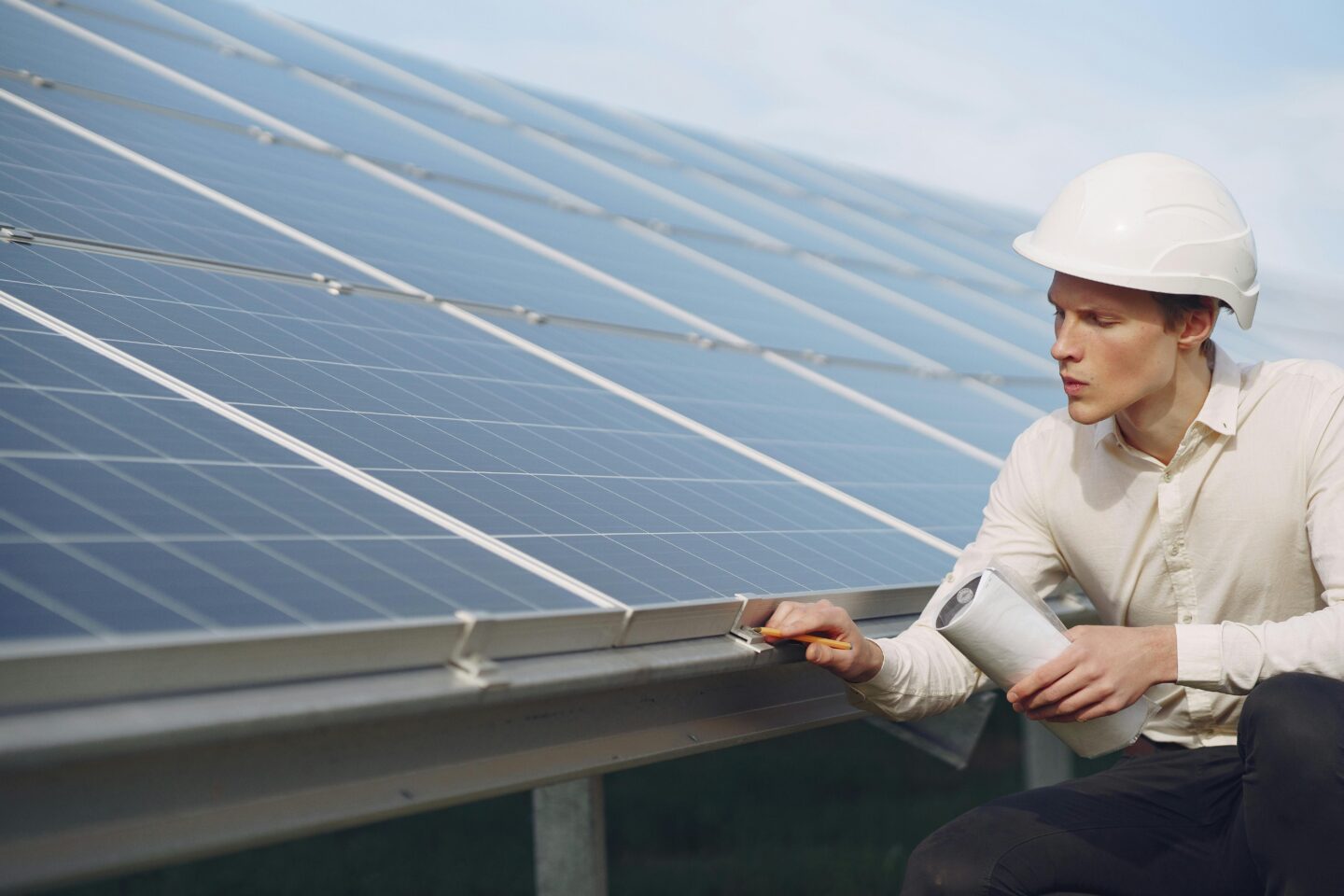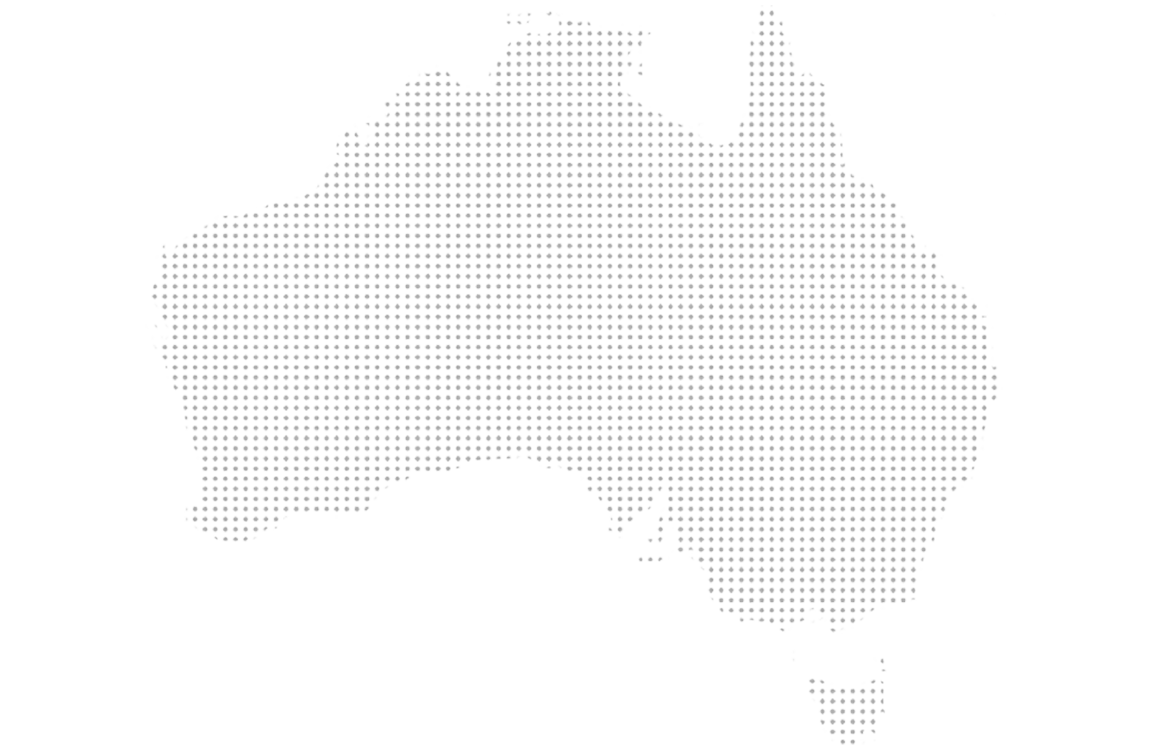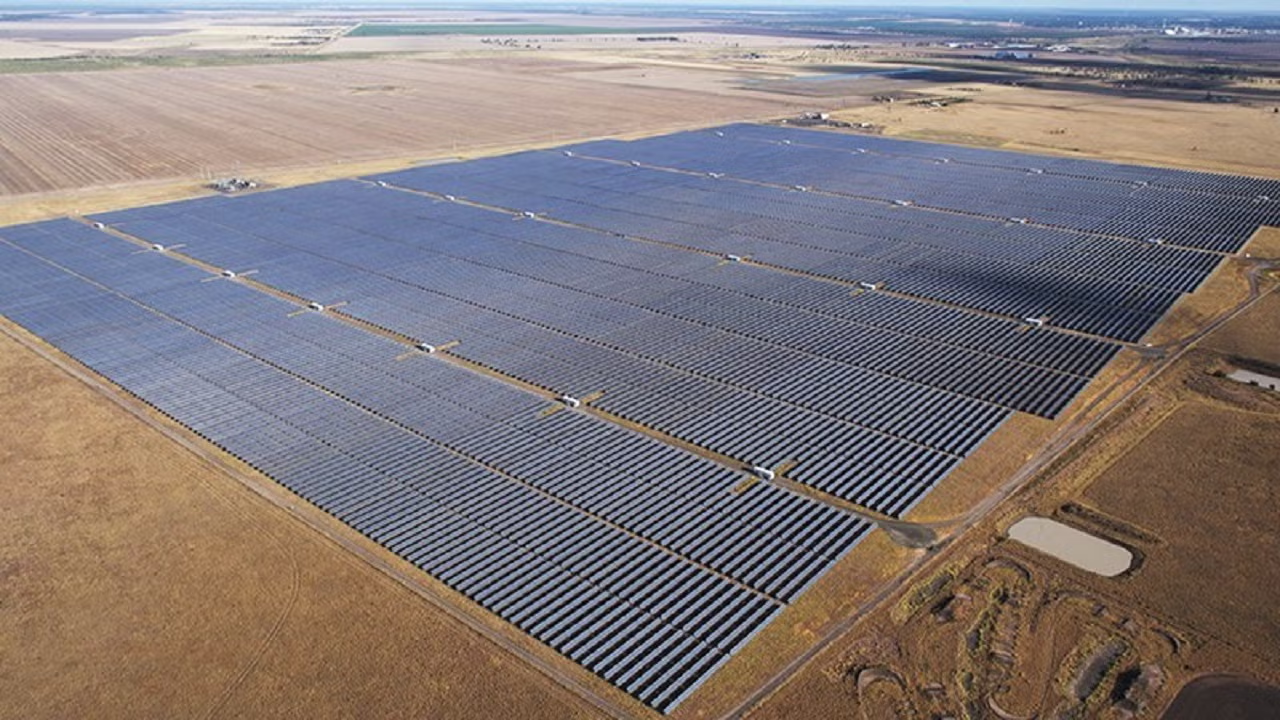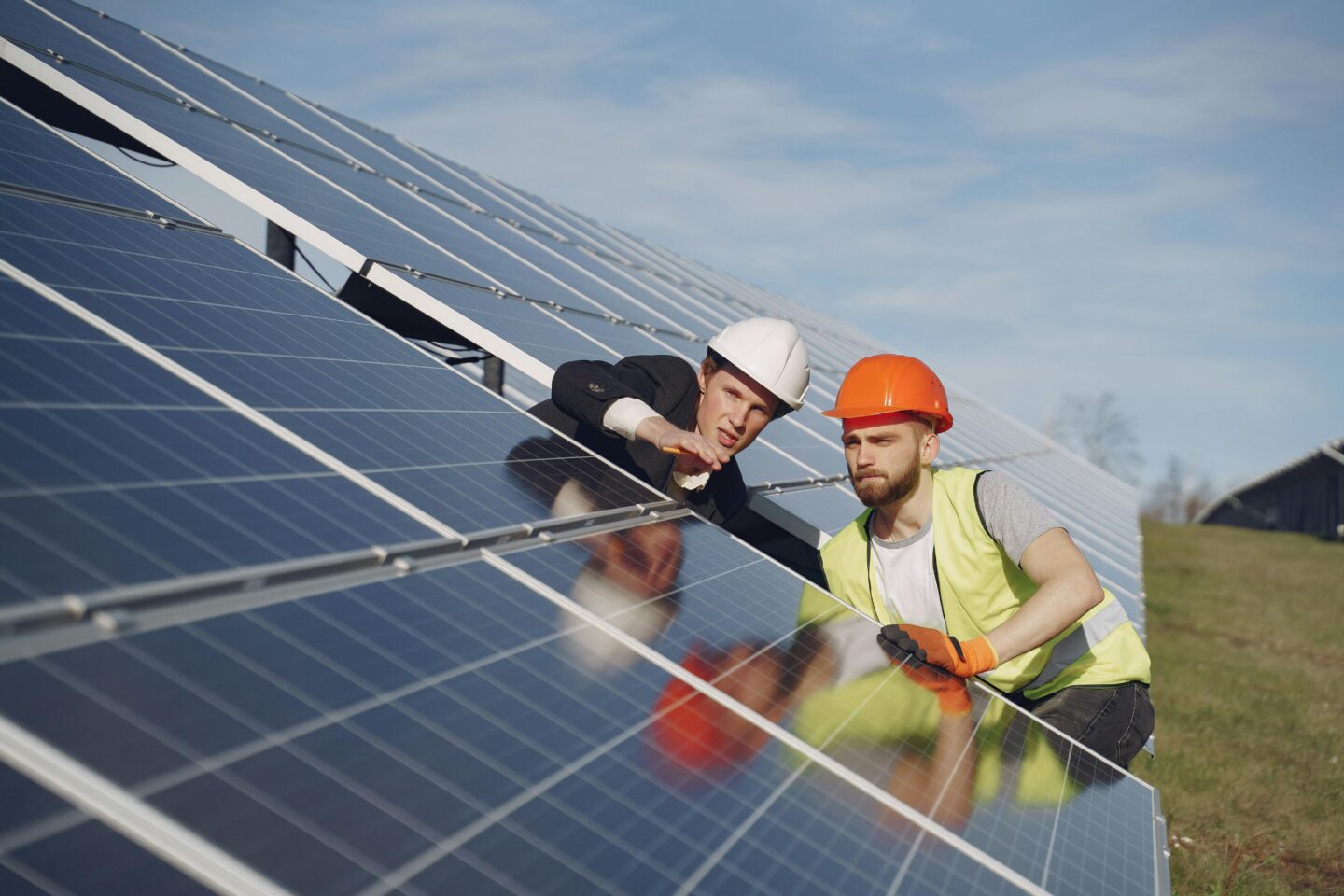
What You Need to Know About Solar Farms
Solar farms are large-scale renewable energy facilities designed to generate electricity from sunlight using photovoltaic (PV) systems. These utility-scale installations play a critical role in advancing Australia’s transition to clean energy and reducing dependence on fossil fuels. Solar farms are also known as solar power stations or solar energy projects and are significantly larger than rooftop solar panel systems.
At Applied Environment & Safety (AES), we collaborate with solar developers to ensure their projects are environmentally responsible, compliant with local and national regulations, and designed for long-term success. In this article, we offer a complete guide to solar farms – what they are, how they work, where they’re built, and how AES supports the entire project lifecycle.
What Is a Solar Farm?
A solar farm is a large energy-producing facility that uses rows of solar photovoltaic (PV) panels to convert sunlight into electrical energy. These projects are built on open land, often spanning tens to hundreds of hectares, and are designed to supply electricity to the public grid.
Solar farms are commonly divided into two categories:
- Photovoltaic (PV) Solar Farms: These are the most common type and use PV systems to convert sunlight directly into electricity.
- Concentrated Solar Power (CSP): Less common in Australia, CSP farms use mirrors or lenses to focus sunlight, creating heat to power a steam turbine.
Most of the solar farms in Australia are PV-based due to cost-efficiency and scalability. The solar panels are mounted on ground-based racks or tracking systems that follow the sun to maximise electricity generation. Inverters convert the generated direct current (DC) electricity into alternating current (AC) so it can be fed into the electricity grid.
These installations contribute to power generation at the regional and national levels, and they support Australia’s broader renewable energy targets. Solar farms have quickly become one of the most affordable forms of new electricity generation, helping to decarbonise Australia’s energy sector.
How Do Solar Farms Work?

Solar farms operate through a multi-stage process that transforms sunlight into usable energy distributed through the electricity grid. These projects are designed not only for efficiency but also for long-term integration into Australia’s energy infrastructure. Their operation includes both passive and active technological systems, storage, and sophisticated grid coordination mechanisms.
Solar Energy Collection
Photovoltaic (PV) panels capture solar radiation and convert it into direct current (DC) electricity. The solar panels used are generally made from silicon and are designed to absorb as much light as possible, even in overcast conditions.
Inversion
Inverters are essential components that convert the DC electricity generated by PV systems into alternating current (AC), the form used by the electricity grid. These inverters can be centralised or distributed throughout the solar farm depending on the system’s design.
Voltage Transformation
After inversion, the AC electricity may go through voltage transformation via transformers, preparing it for efficient transmission across long distances through the grid infrastructure.
Energy Storage (Optional but Increasingly Common)
Many modern solar energy projects include Battery Energy Storage Systems (BESS) that store surplus electricity. These systems allow energy to be dispatched during periods of low sunlight, evening peaks, or grid instability, which improves the reliability and commercial value of solar energy.
Grid Connection and Energy Export
Once the electricity is converted and conditioned, it is fed into substations and then to the broader electricity grid. This electricity powers homes, businesses, and industrial sites. Utility companies often monitor and control the input to ensure grid stability.
Data Monitoring and Optimisation
Solar farms are typically equipped with remote monitoring systems and IoT-enabled devices that track energy production, weather patterns, panel performance, and system health. This data is used to optimise output and schedule maintenance proactively.
Solar farms may also be paired with complementary technologies such as wind power or hydro storage to create hybrid systems. These arrangements help stabilise the grid by compensating for solar’s natural intermittency. Additionally, many solar projects incorporate predictive analytics powered by AI and machine learning to forecast energy generation and demand, improving both operational efficiency and financial returns.
Tracking systems are another key part of how solar farms function. Single-axis tracking systems move panels east to west across the day, while dual-axis systems also adjust the tilt angle based on seasonal sun elevation. These systems can increase output by 15–25% compared to fixed mounts.
In summary, solar farms rely on advanced hardware, digital tools, and robust grid integration to function as reliable and scalable sources of clean electricity. The combination of photovoltaic technology, energy storage, and smart controls makes them increasingly viable as base-load energy contributors in Australia’s evolving energy mix.
How Many Solar Farms Are There in Australia?

Australia’s solar energy industry has experienced exponential growth in the past decade, fuelled by favourable climate conditions, policy support, and rapid technological innovation. As of early 2024, there are over 150 operational utility-scale solar farms across the country, with dozens more in construction or undergoing planning and approvals.
According to the Clean Energy Council’s 2024 Annual Report, solar energy is now the leading source of new electricity generation in Australia, accounting for 36% of all large-scale renewable energy generation. Large-scale solar farms are complemented by Australia’s world-leading rooftop solar uptake, which together have made solar the dominant renewable energy source in the country.
Key statistics include:
- Queensland: The state leads the nation with over 130 utility-scale solar projects greater than 1 MW capacity, representing nearly one-third of the country’s total solar generation capacity. The Queensland Renewable Energy Zones (QREZ) initiative continues to unlock new project opportunities.
- New South Wales & Victoria: Both states have invested heavily in solar infrastructure as part of their energy transition strategies. NSW currently has over 50 operating large-scale solar farms, with many more approved or under construction. Victoria’s VRET2 reverse auction has further incentivised clean energy development.
- National Capacity: According to OpenNEM, Australia’s total large-scale solar capacity exceeds 6.2 GW, not including rooftop systems. Utility-scale output continues to climb year-over-year as more projects come online.
Solar farm developments are concentrated in regions with:
- High average solar radiation (e.g. inland Queensland and NSW)
- Low population density
- Access to existing transmission infrastructure
- Previously cleared or degraded agricultural land
A growing number of solar projects are being developed as hybrid energy hubs, where solar generation is co-located with wind farms, battery storage (BESS), or even green hydrogen facilities. These co-located projects improve grid reliability and offer economic efficiencies by sharing infrastructure and balancing generation profiles.
The pipeline remains strong: the Clean Energy Regulator reports more than 15 GW of large-scale solar generation is either committed or proposed nationally. This indicates that Australia’s solar fleet is not only extensive – it is still in an aggressive growth phase.
Where Are Solar Farms Built?
Australia’s geography makes it ideal for large-scale solar projects. Most solar farms are built in rural or semi-arid areas with high solar exposure and ample open land.
Preferred locations include:
- Western Queensland
- Inland New South Wales
- South Australia’s Riverland and Eyre Peninsula
- Northern Victoria
Site selection factors include:
- High average solar radiation
- Proximity to transmission lines
- Minimal slope and shading
- Previously disturbed or degraded land
- Biodiversity sensitivity and proximity to ecologically significant areas
Many projects make use of former grazing or agricultural land. These sites are often less environmentally sensitive and can benefit from rehabilitation programs integrated into the solar development.
For an up-to-date list of solar farms by state and capacity, refer to the National Map of Renewable Energy Projects.
Australia’s Largest Solar Farms
Australia is home to several impressive solar power plants, with the Western Downs Green Power Hub currently holding the title of the nation’s largest operational solar farm.
Western Downs Green Power Hub

- Location: Near Chinchilla, Queensland
- Commissioned: 2023
- Size: 1,500 hectares
- Infrastructure: Over 1 million solar panels
- Output: 1,080 GWh annually (enough to power ~235,000 homes)
- Storage: 540 MW / 1,080 MWh battery energy storage
- Land Use: Sheep grazing beneath arrays
This project demonstrates how solar power stations can integrate clean energy production with agriculture and biodiversity goals. The use of battery storage also makes this one of the most resilient solar projects in the country.
Other notable large-scale solar farms include:
- Limondale Solar Farm (NSW)
- Darling Downs Solar Farm (QLD)
- Bungala Solar Farm (SA)
- Numurkah Solar Farm (VIC)
These installations show the scalability of solar energy and its potential to replace coal-fired power generation.
Environmental Considerations in Solar Development
While solar farms are environmentally friendly in operation – producing no direct emissions or air pollutants – careful, site-specific planning is essential to mitigate unintended impacts on land, water, flora, fauna, and local communities. Poorly sited or managed solar projects can disrupt habitats, contribute to erosion, or conflict with land uses such as agriculture or conservation areas.
At AES, we work closely with developers and project stakeholders to embed sustainability into every phase of solar project development. This means more than simply ticking boxes for compliance—we deliver proactive environmental management strategies that reduce risks, accelerate approvals, and ensure long-term site resilience.
Our services include:
Environmental Impact Assessments (EIAs)
Comprehensive studies evaluating the potential environmental effects of a proposed solar development. These assessments form the foundation for regulatory approval and stakeholder consultation.
EPBC Act Referrals and Self-Assessments
Guidance through Australia’s national environmental law, assessing project impacts on Matters of National Environmental Significance (MNES) such as threatened species or ecological communities.
Cultural Heritage Management
Engagement with Traditional Owners and cultural heritage consultants to identify and protect significant sites in accordance with Indigenous and statutory frameworks.
Species Management Programs
Detailed assessments and mitigation strategies to protect native wildlife, including habitat preservation, relocation plans, and monitoring protocols.
Soil and Water Management Plans
Erosion control, stormwater drainage, sediment management, and soil rehabilitation strategies tailored to specific site conditions.
Biosecurity and Weed Management Plans
Measures to prevent the spread of invasive plant species and pathogens during construction and operation.
Construction Environmental Management Plans (CEMP)
Implementation tools that guide contractors through environmental controls, legal requirements, and best practices during the build phase.
End-of-life Decommissioning and Rehabilitation Plans
Frameworks for removing infrastructure, restoring the landscape, and meeting post-closure environmental commitments.
We also provide:
- Strategic advice on biodiversity offsets to compensate for unavoidable environmental impacts.
- Design of native vegetation buffers that enhance local biodiversity and screen infrastructure from nearby landholders.
- Erosion and sediment control plans using hydrological modelling and on-site risk assessments.
Our integrated approach ensures that solar projects do more than avoid harm – they can contribute positively to ecological connectivity, land restoration, and community trust. From the Fraser Coast to the Northern Tablelands, AES helps developers deliver renewable energy infrastructure that meets both energy and environmental goals.
Case Study: Fraser Coast Solar Farm

AES is currently supporting the development of the Fraser Coast Solar and Battery Energy Storage System (BESS) Project, a 290 MW utility-scale solar farm located near Teebar Creek in Queensland’s Fraser Coast region. This landmark project includes a co-located BESS facility designed to provide consistent electricity supply, reduce reliance on fossil fuels, and improve grid reliability across the region.
The Fraser Coast project plays a key role in advancing Queensland’s renewable energy pipeline and aligns with state and federal clean energy targets. It also highlights how renewable infrastructure can be successfully integrated into agricultural and regional settings with minimal ecological disturbance.
AES’s role in the project includes:
- Site suitability assessment and early-phase planning: Evaluating land conditions, solar exposure, access to transmission infrastructure, and constraints related to biodiversity, cultural heritage, and slope.
- Coordination of ecological surveys: Leading a comprehensive fieldwork program that included targeted flora and fauna surveys, assessments of threatened ecological communities (TECs), invasive species mapping, and nocturnal monitoring to inform impact mitigation strategies.
- Management plan development: Drafting a suite of tailored environmental management plans, including:
- Construction Environmental Management Plan (CEMP)
- Rehabilitation Management Plan
- Soil and Water Management Plan
- Weed Management Plan
- Biosecurity Management Plan
- Flora and Fauna Management Plan
- Cultural Heritage Evaluation
- Bushfire risk assessment: Identifying and modelling bushfire hazards, recommending buffer zones, firebreaks, and on-site response measures that align with Queensland’s construction and operational codes.
- Hydrology analysis: Evaluating surface water flow paths, drainage impacts, and erosion risks using modelling to design low-impact water management systems that minimise soil disturbance and downstream effects.
- EPBC Act referral preparation: Conducting a self-assessment under the Environment Protection and Biodiversity Conservation Act 1999, evaluating the potential impacts on Matters of National Environmental Significance (MNES), including habitat for threatened species, wetlands, and migratory species.
AES’s multidisciplinary approach has ensured that the Fraser Coast Solar Farm has progressed efficiently through development approvals while maintaining a high standard of environmental performance. The project is now considered a regional benchmark for best practice in integrated solar development.
Notably, the solar farm’s design incorporates:
- Measures to reconnect fragmented habitat
- Buffer zones for sensitive ecological areas
- Dual land use strategies, including livestock grazing beneath the solar arrays
By embedding sustainability into every layer of project design, the Fraser Coast Solar Farm demonstrates how utility-scale solar can deliver clean energy while preserving local ecosystems, cultural heritage, and agricultural value.
Solar Farms vs Other Renewable Projects
While solar energy is among the most scalable and cost-effective renewable options, it is often deployed in combination with other technologies for optimal results.
Comparison Points:
- Wind Farms: Better for overnight power, but require consistent wind speeds.
- Hydro: Stable output but geographically limited.
- CSP: Efficient but expensive and complex.
- BESS: Essential for all renewables to manage intermittency.
Hybrid projects combining wind and solar energy are becoming more popular. These facilities use complementary generation profiles to maximise capacity factors and reduce the cost of balancing the grid.
The Future of Solar Energy in Australia

Australia has one of the highest rates of solar radiation in the world, making it uniquely suited to solar energy production. This geographic advantage, combined with favourable market conditions and policy momentum, is positioning solar power as the cornerstone of the country’s renewable energy transformation.
The last decade has seen a dramatic rise in both rooftop and utility-scale solar installations. However, the next decade promises even more ambitious developments—driven by decarbonisation targets, global investment trends, and the urgency of energy resilience in the face of climate volatility. The energy sector is undergoing a major redesign, with solar energy at its core.
Key Trends to Watch:
- Expansion of Renewable Energy Zones (REZs): Governments are establishing REZs to centralise investment and infrastructure for renewables. These zones are prioritised for transmission upgrades and fast-tracked approvals, providing developers with certainty and scalability.
- Integration of AI and IoT for Optimised Performance: Advanced monitoring systems and AI-driven analytics are enabling predictive maintenance, performance optimisation, and real-time energy forecasting. These technologies will help solar projects become more cost-effective and responsive to grid demands.
- Dual Land Use Strategies: There is growing adoption of agrivoltaics—integrating solar with agriculture. This includes sheep grazing beneath panels, pollinator habitats, and even crop cultivation in some settings. These strategies improve land-use efficiency and strengthen community support.
- Growth in Solar Power Export: Projects like Sun Cable, such as the Australia-Asia PowerLink, aim to export solar energy from the Northern Territory to Singapore via undersea transmission lines, signal a new era of solar as a high-value export commodity. Australia could become a regional energy exporter powered by the sun.
- Community and Decentralised Solar Projects: Beyond utility-scale farms, we’re seeing a rise in community-owned solar systems, virtual power plants (VPPs), and solar cooperatives. These initiatives empower local communities, reduce energy costs, and build social license for broader energy reforms.
- Long-Duration Storage and Hybrid Integration: As battery technology improves, solar farms will increasingly be coupled with long-duration storage systems and hybrid configurations with wind or hydro. This will mitigate intermittency and allow solar to play a base-load role.
- Carbon Farming and Environmental Credits: Solar projects that incorporate biodiversity offsets or land restoration may benefit from participation in carbon markets. These co-benefits can enhance project value while supporting Australia’s net-zero emissions goals.
As technology continues to evolve, costs continue to fall, and policies continue to align with climate goals, Australia is poised to lead the world in solar innovation and deployment. Solar farms will not only deliver clean electricity, but also contribute to economic revitalisation in regional areas, promote energy sovereignty, and demonstrate the viability of large-scale, nature-compatible infrastructure.
Why Choose AES for Solar Project Support?
AES is one of Australia’s leading environmental consultancies focused on renewable infrastructure. We bring:
- Deep understanding of planning frameworks
- Experienced project managers and scientists
- Proven success across dozens of solar developments
- Customised environmental documentation and reporting
- Support through the entire project lifecycle-from pre-feasibility to decommissioning
Our goal is to help developers deliver clean energy projects that stand up to regulatory scrutiny, stakeholder expectations, and environmental responsibility.
Related Articles in This Series
Explore more in our solar education series:
- What You Need to Know About Solar Farms in Australia
- What You Need to Know About the Biggest Solar Farm in Australia
- What You Need to Know About Solar Farm Construction
